-
 Bitcoin
Bitcoin $108,463.3266
-1.47% -
 Ethereum
Ethereum $2,535.8576
-3.62% -
 Tether USDt
Tether USDt $1.0006
0.02% -
 XRP
XRP $2.2352
-2.24% -
 BNB
BNB $658.1049
-0.63% -
 Solana
Solana $149.9207
-2.53% -
 USDC
USDC $0.9998
-0.07% -
 TRON
TRON $0.2857
0.45% -
 Dogecoin
Dogecoin $0.1659
-4.24% -
 Cardano
Cardano $0.5784
-3.85% -
 Hyperliquid
Hyperliquid $38.4944
-4.70% -
 Sui
Sui $2.9107
-4.19% -
 Bitcoin Cash
Bitcoin Cash $485.3637
-3.32% -
 Chainlink
Chainlink $13.3074
-4.18% -
 UNUS SED LEO
UNUS SED LEO $9.0499
0.41% -
 Avalanche
Avalanche $18.0347
-3.98% -
 Stellar
Stellar $0.2394
-2.23% -
 Toncoin
Toncoin $2.8110
-2.68% -
 Shiba Inu
Shiba Inu $0.0...01155
-3.23% -
 Litecoin
Litecoin $87.7967
-3.87% -
 Hedera
Hedera $0.1555
-2.87% -
 Monero
Monero $317.3839
-1.79% -
 Polkadot
Polkadot $3.4144
-4.90% -
 Dai
Dai $1.0000
-0.02% -
 Ethena USDe
Ethena USDe $1.0003
0.00% -
 Bitget Token
Bitget Token $4.4734
-2.29% -
 Uniswap
Uniswap $7.2556
-6.53% -
 Pepe
Pepe $0.0...09693
-7.27% -
 Aave
Aave $267.0924
-4.81% -
 Pi
Pi $0.4834
-3.31%
Best indicator to use with candlestick patterns for Bitcoin.
Combining candlestick patterns with indicators like volume, MACD, and RSI enhances Bitcoin trading accuracy by confirming trends and reducing false signals.
Jul 04, 2025 at 12:36 pm
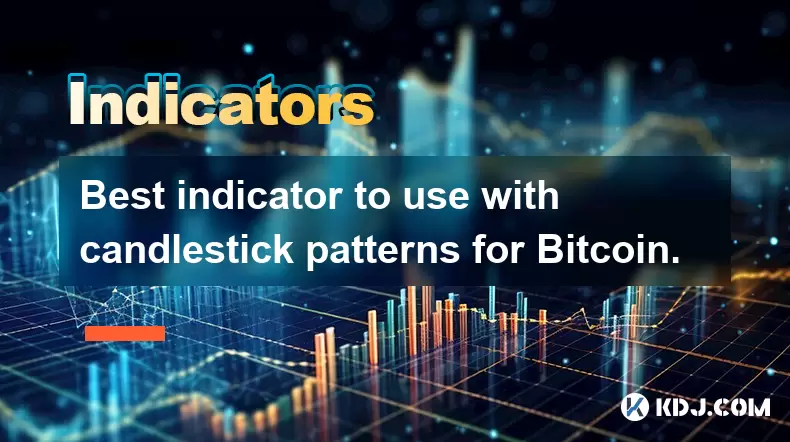
Understanding the Role of Indicators with Candlestick Patterns
In the world of cryptocurrency trading, especially when dealing with Bitcoin, technical analysis plays a crucial role in identifying potential price movements. Traders often rely on candlestick patterns to forecast market behavior. However, these patterns alone may not always provide sufficient confirmation for making informed decisions. This is where combining them with reliable indicators becomes essential.
Candlestick patterns offer visual insights into market sentiment and can signal trend reversals or continuations. But without additional tools like volume indicators or momentum oscillators, traders might miss critical signals that validate the authenticity of a pattern. Using an appropriate indicator alongside candlestick formations enhances accuracy and reduces false signals.
Important:
The effectiveness of any indicator depends heavily on how well it complements the specific candlestick pattern being analyzed.Why Combine Candlestick Patterns with Indicators?
Candlesticks are powerful because they capture the psychology behind price action. Each candle represents the battle between buyers and sellers over a given period. When certain patterns emerge — such as hammers, engulfing candles, or dojis — they suggest possible shifts in momentum. However, these signals can be misleading if used in isolation.
By integrating technical indicators, traders gain deeper insight into whether a particular candlestick pattern has enough strength to result in a real price movement. For example, a bullish engulfing pattern might look promising, but without confirmation from an indicator like RSI or MACD, it could easily turn out to be a trap set by larger players in the market.
- RSI (Relative Strength Index) helps identify overbought or oversold conditions.
- MACD (Moving Average Convergence Divergence) confirms changes in momentum.
- Volume shows the intensity behind price moves.
Each of these tools provides a different dimension of analysis that supports candlestick interpretation.
Selecting the Best Indicator for Bitcoin Trading
Bitcoin’s volatility makes it both exciting and risky. Therefore, choosing the right indicator to pair with candlestick patterns is vital for successful trading. Among various options, volume stands out as one of the most reliable companions for candlestick strategies in BTC markets.
When a candlestick pattern forms, checking the corresponding volume can reveal whether institutional players are actively participating or if the move is driven by retail speculation. High volume during a bullish reversal pattern suggests strong buying pressure, increasing the probability of a sustained uptrend.
Another excellent choice is the MACD, which works well in trending environments. It filters out noise and highlights genuine shifts in momentum. When combined with candlestick signals like piercing lines or dark cloud covers, MACD crossovers can confirm trade setups effectively.
Lastly, RSI serves as a valuable tool for spotting exhaustion points. If a bearish candle appears at a resistance level while RSI is above 70, it increases the likelihood of a pullback.
How to Use Volume with Candlestick Patterns
Using volume with candlestick patterns involves more than just observing whether it's high or low. Traders must understand the context and correlation between price action and volume levels.
Here’s how to integrate volume effectively:
- Identify key candlestick patterns such as pin bars, inside bars, or engulfing candles.
- Check the volume associated with the pattern — higher-than-average volume adds credibility to the signal.
- Look for divergence between price and volume. If prices rise but volume declines, it may indicate weakening momentum.
- Use volume spikes during breakouts or breakdowns to confirm the strength of the move.
For instance, if a bullish engulfing candle appears after a downtrend and is accompanied by a significant increase in volume, it strengthens the case for a reversal. Conversely, if the same pattern occurs on low volume, it may be a false breakout.
Combining MACD with Candlestick Formations
The MACD indicator consists of two moving averages and a histogram that reflects the difference between them. It helps traders identify momentum shifts and trend strength, making it ideal for confirming candlestick signals.
To use MACD with candlestick patterns:
- Watch for candlestick patterns near support/resistance levels, especially those indicating reversals.
- Observe MACD line crossing above or below the signal line around the time the pattern completes.
- Analyze the histogram — expanding bars suggest increasing momentum, while shrinking ones imply slowing down.
- Look for bullish or bearish divergences between MACD and price action to anticipate reversals.
For example, a hammer candle forming at a major support level with a concurrent MACD crossover from negative to positive territory gives a stronger buy signal. Similarly, a shooting star appearing at resistance with a bearish MACD cross can serve as a sell trigger.
Integrating RSI with Candlestick Analysis
The Relative Strength Index (RSI) is another popular tool that measures the speed and change of price movements. It oscillates between 0 and 100 and is typically used to identify overbought (>70) or oversold (<30) conditions.
When using RSI with candlestick patterns:
- Look for candlestick patterns in extreme RSI zones — for example, a bullish reversal pattern forming when RSI is below 30.
- Check for RSI divergence — if the price makes a new low but RSI does not, it may signal a reversal.
- Wait for RSI to exit the extreme zone after the pattern forms, which confirms the reversal.
- Avoid taking trades based solely on RSI readings — combine with candlestick confirmation for better results.
A practical scenario: A doji candle appears after a sharp decline, and RSI is hovering around 25. If the next candle closes higher and RSI rises above 30, it validates the reversal and offers a solid entry point.
Frequently Asked Questions
Q: Can I use candlestick patterns without any indicators?
While candlestick patterns can provide useful insights on their own, combining them with indicators like volume, MACD, or RSI significantly improves the reliability of trading signals. Indicators help filter out false patterns and confirm the strength of a move.
Q: Which candlestick pattern works best with volume?
Engulfing patterns tend to work exceptionally well with volume analysis. A bullish engulfing candle with rising volume indicates strong buying interest, whereas a bearish engulfing candle with high volume suggests aggressive selling pressure.
Q: Is it necessary to use multiple indicators with candlestick patterns?
It’s not mandatory to use multiple indicators, but doing so can enhance decision-making. Many traders prefer to use one primary indicator (like volume or MACD) along with candlestick signals to avoid clutter and maintain clarity in their analysis.
Q: How do I know if a candlestick pattern is valid?
Validity can be assessed by analyzing the surrounding context, including trend direction, support/resistance levels, and confirmation from volume or other indicators. A pattern occurring at a key technical level with supporting indicators is more likely to produce accurate results.
Disclaimer:info@kdj.com
The information provided is not trading advice. kdj.com does not assume any responsibility for any investments made based on the information provided in this article. Cryptocurrencies are highly volatile and it is highly recommended that you invest with caution after thorough research!
If you believe that the content used on this website infringes your copyright, please contact us immediately (info@kdj.com) and we will delete it promptly.
- Bitcoin's Pattern Break: Are HODLers the Key to the Next Surge?
- 2025-07-04 18:50:12
- Bitcoin Price, Trump's Bill, and the $150K Dream: A NYC Take
- 2025-07-04 19:50:12
- Ethereum, LILPEPE, and the July Bounce: Will Pepe Steal ETH's Thunder?
- 2025-07-04 19:10:12
- Binance Institutional Loans: Unlocking 4x Leverage and Zero Interest for Whales
- 2025-07-04 19:15:12
- Bitcoin Bull Run: Analysts Eye Peak in Late 2025?
- 2025-07-04 19:20:13
- Pepe Indicators, Bullish Forecast: Can the Meme Coin Rally?
- 2025-07-04 19:25:12
Related knowledge
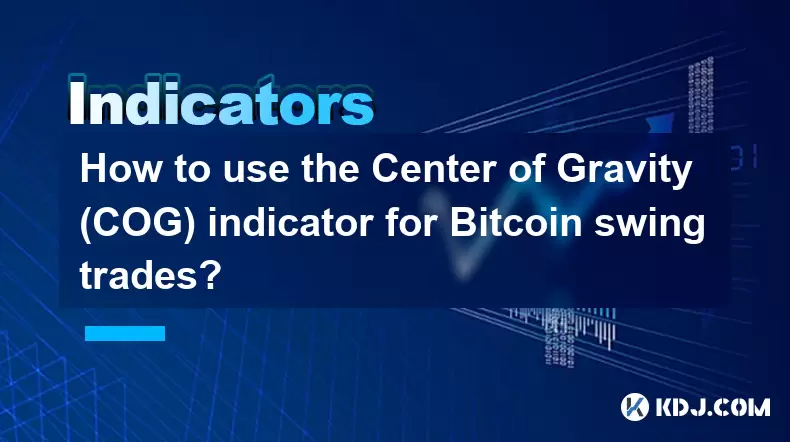
How to use the Center of Gravity (COG) indicator for Bitcoin swing trades?
Jul 04,2025 at 06:21pm
Understanding the Center of Gravity (COG) IndicatorThe Center of Gravity (COG) indicator is a technical analysis tool primarily used to identify potential trend reversals and momentum shifts in financial markets, including cryptocurrency trading. Unlike traditional oscillators like RSI or MACD, the COG focuses on calculating the weighted average price o...
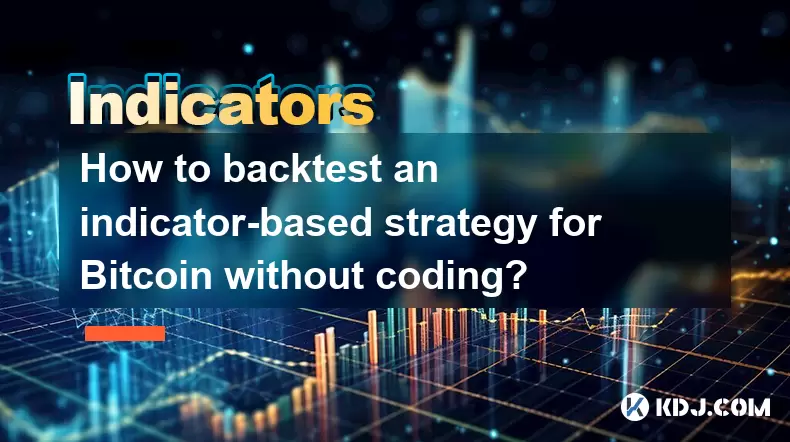
How to backtest an indicator-based strategy for Bitcoin without coding?
Jul 04,2025 at 06:50pm
Understanding Backtesting in Cryptocurrency TradingBacktesting is the process of evaluating a trading strategy by applying it to historical data to see how it would have performed. In the context of Bitcoin, backtesting allows traders to test their indicator-based strategies using past price movements and volume data. This helps identify whether a strat...

What is indicator confluence and why is it important for Bitcoin trading?
Jul 04,2025 at 03:14pm
Understanding the Concept of Indicator ConfluenceIndicator confluence refers to the alignment or agreement between multiple technical indicators when analyzing a financial asset, such as Bitcoin. Instead of relying on a single indicator to make trading decisions, traders use confluence to increase the probability of successful trades by ensuring that di...

Best indicator to use with candlestick patterns for Bitcoin.
Jul 04,2025 at 12:36pm
Understanding the Role of Indicators with Candlestick PatternsIn the world of cryptocurrency trading, especially when dealing with Bitcoin, technical analysis plays a crucial role in identifying potential price movements. Traders often rely on candlestick patterns to forecast market behavior. However, these patterns alone may not always provide sufficie...
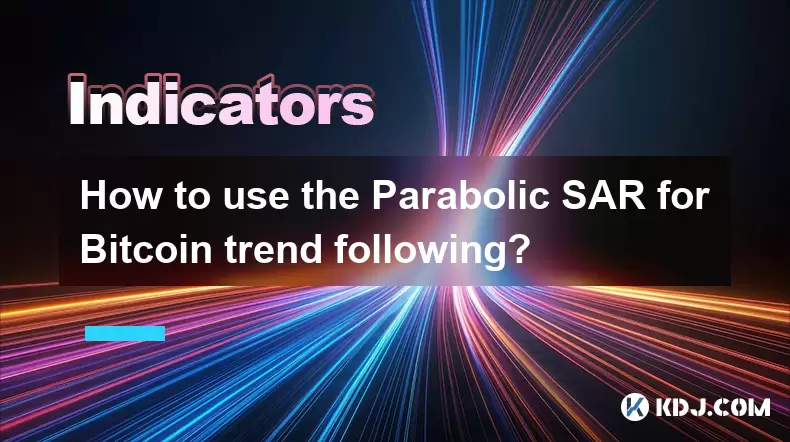
How to use the Parabolic SAR for Bitcoin trend following?
Jul 04,2025 at 05:21pm
Understanding the Parabolic SAR IndicatorThe Parabolic SAR (Stop and Reverse) is a technical analysis tool developed by J. Welles Wilder, primarily used to identify potential reversals in asset prices. In the context of Bitcoin trading, it serves as a crucial instrument for spotting entry and exit points during trending markets. The indicator appears on...
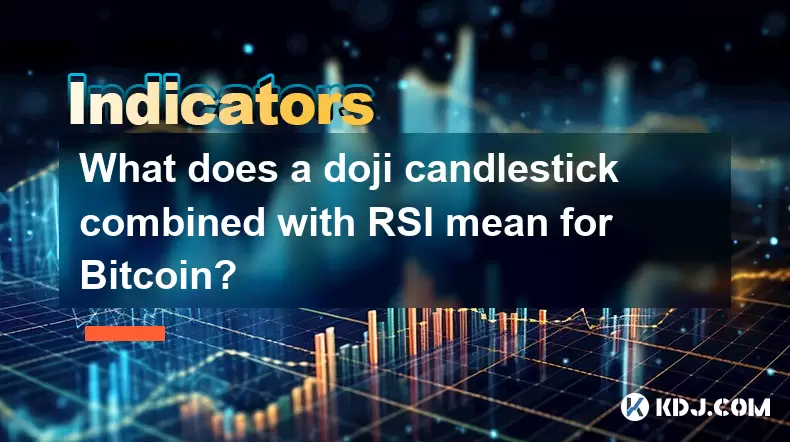
What does a doji candlestick combined with RSI mean for Bitcoin?
Jul 04,2025 at 03:08pm
Understanding the Doji Candlestick PatternA doji candlestick is a critical technical analysis pattern that signals market indecision. It forms when the opening and closing prices of an asset are nearly identical, resulting in a very small or nonexistent body with long upper and lower wicks. In the context of Bitcoin, this pattern often suggests a potent...

How to use the Center of Gravity (COG) indicator for Bitcoin swing trades?
Jul 04,2025 at 06:21pm
Understanding the Center of Gravity (COG) IndicatorThe Center of Gravity (COG) indicator is a technical analysis tool primarily used to identify potential trend reversals and momentum shifts in financial markets, including cryptocurrency trading. Unlike traditional oscillators like RSI or MACD, the COG focuses on calculating the weighted average price o...

How to backtest an indicator-based strategy for Bitcoin without coding?
Jul 04,2025 at 06:50pm
Understanding Backtesting in Cryptocurrency TradingBacktesting is the process of evaluating a trading strategy by applying it to historical data to see how it would have performed. In the context of Bitcoin, backtesting allows traders to test their indicator-based strategies using past price movements and volume data. This helps identify whether a strat...

What is indicator confluence and why is it important for Bitcoin trading?
Jul 04,2025 at 03:14pm
Understanding the Concept of Indicator ConfluenceIndicator confluence refers to the alignment or agreement between multiple technical indicators when analyzing a financial asset, such as Bitcoin. Instead of relying on a single indicator to make trading decisions, traders use confluence to increase the probability of successful trades by ensuring that di...

Best indicator to use with candlestick patterns for Bitcoin.
Jul 04,2025 at 12:36pm
Understanding the Role of Indicators with Candlestick PatternsIn the world of cryptocurrency trading, especially when dealing with Bitcoin, technical analysis plays a crucial role in identifying potential price movements. Traders often rely on candlestick patterns to forecast market behavior. However, these patterns alone may not always provide sufficie...

How to use the Parabolic SAR for Bitcoin trend following?
Jul 04,2025 at 05:21pm
Understanding the Parabolic SAR IndicatorThe Parabolic SAR (Stop and Reverse) is a technical analysis tool developed by J. Welles Wilder, primarily used to identify potential reversals in asset prices. In the context of Bitcoin trading, it serves as a crucial instrument for spotting entry and exit points during trending markets. The indicator appears on...

What does a doji candlestick combined with RSI mean for Bitcoin?
Jul 04,2025 at 03:08pm
Understanding the Doji Candlestick PatternA doji candlestick is a critical technical analysis pattern that signals market indecision. It forms when the opening and closing prices of an asset are nearly identical, resulting in a very small or nonexistent body with long upper and lower wicks. In the context of Bitcoin, this pattern often suggests a potent...
See all articles

























































































